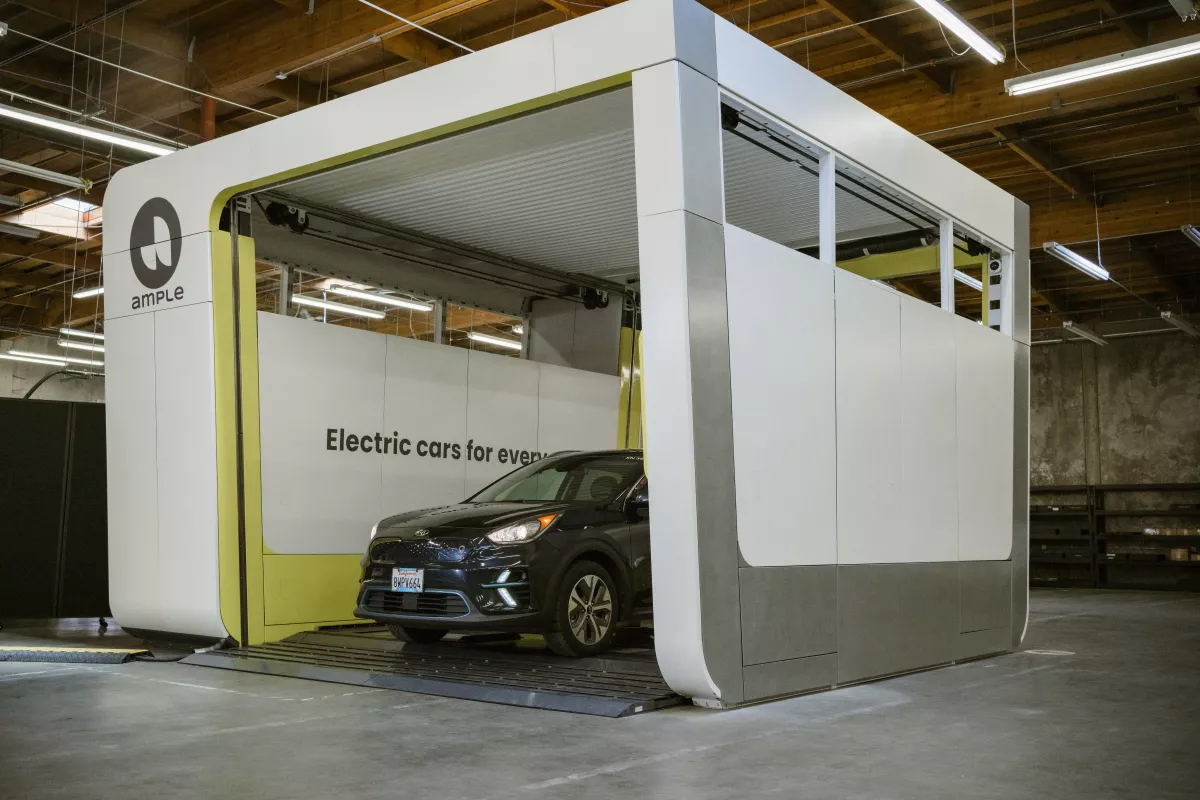As electric vehicle adoption ramps up, drivers may start to find queues adding to their top-up times at charging stations. One alternative solution with potential is to swap out the run-down battery pack for a fresh one, and Ample has just revealed that it's managed to do so in just five minutes.
Ample launched its first-generation battery swap station back in 2021, after developing the solution in stealth mode for seven years. Electric vehicles fitted with "Lego-like" battery modules could roll onto the platform and have its spent modules automatically removed and replaced with fully charged ones in under 10 minutes. The removed battery units are then recharged, ready for the next customer.
Since launch, the company reports that stations have been deployed across the San Francisco Bay Area to support fleet partners such as Uber and Sally in testing the quick-swap solution. Ample has also been in consultation with last-mile delivery services to get a better understanding of their needs.
"When working with these fleets, we continuously heard that despite well-intentioned efforts to electrify fleets, drivers could spend upwards of 10-12 hours, or 25% of a work week, at a charging station," said Ample in a blog post. "We've heard from cities that, in the race to electrify, there is a lack of reliable EV charging for city dwellers who don't have access to garages and the option of overnight charging, and our new solution seeks to fix that."

The latest station is designed to support electric vehicles of all sizes – from small passenger cars to Sprinter-sized delivery vans. The EV rolls onto the platform, which raises while the swap is in progress. Drivers and passengers now have the option to remain within the vehicle throughout the process, or exit and stretch their legs. And five minutes later, the low-charge battery modules have been removed and replaced with fresh ones and the vehicle can be driven out of the station.
Ample has described the recent experience of an Uber driver in San Francisco, who picked up and dropped off passengers around the Bay Area and clocked up 120 miles before the batteries needed some attention. The Ample station's door automatically raised after identifying the approaching authorized vehicle, the driver parked up and then initiated the quick-swap process using a smartphone app.
The domestically produced shoebox-sized battery modules have been tweaked for improved safety, and are designed for integration into any modern electric vehicle. The new stations have been redesigned for easier deployment to a site in just three days, and have also been made more durable to suit different local conditions as the company eyes expansion. They can also be remotely monitored 24/7 "for enhanced safety and customer support."
Ample is now calling for more electric vehicle manufacturers, fleet operators and municipalities "to join us in the quest to electrify." The video below has more.
Source: Ample






